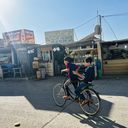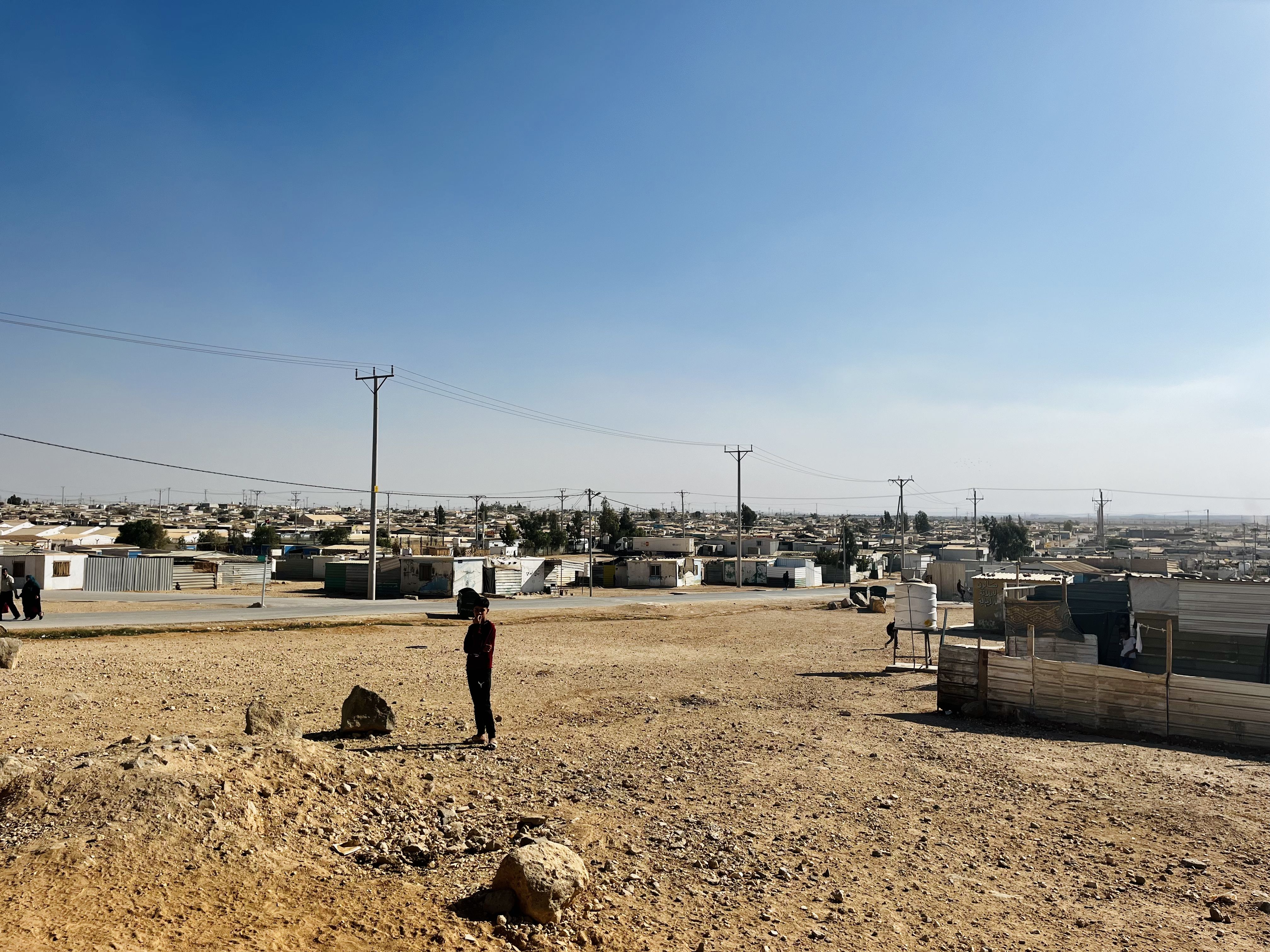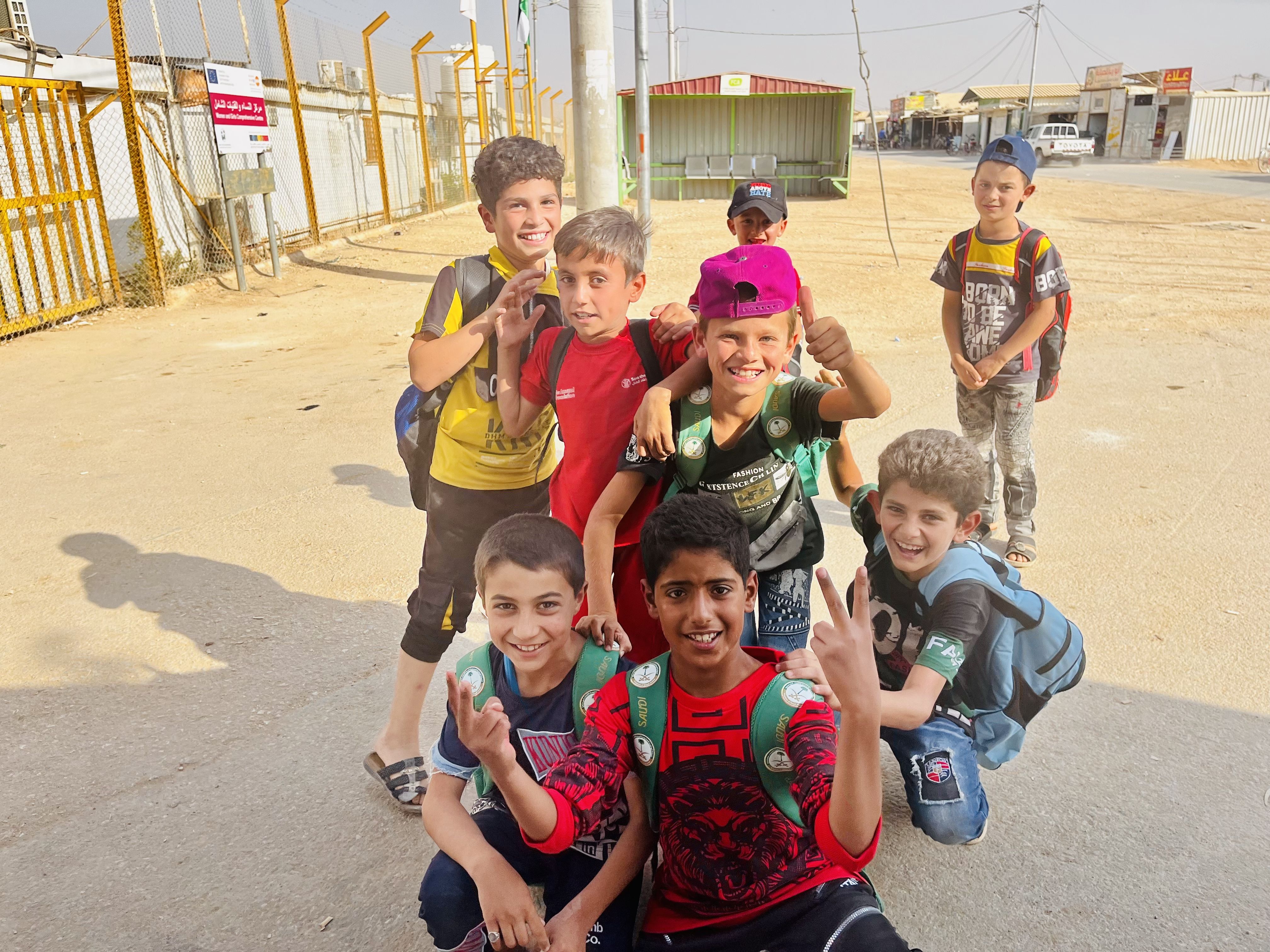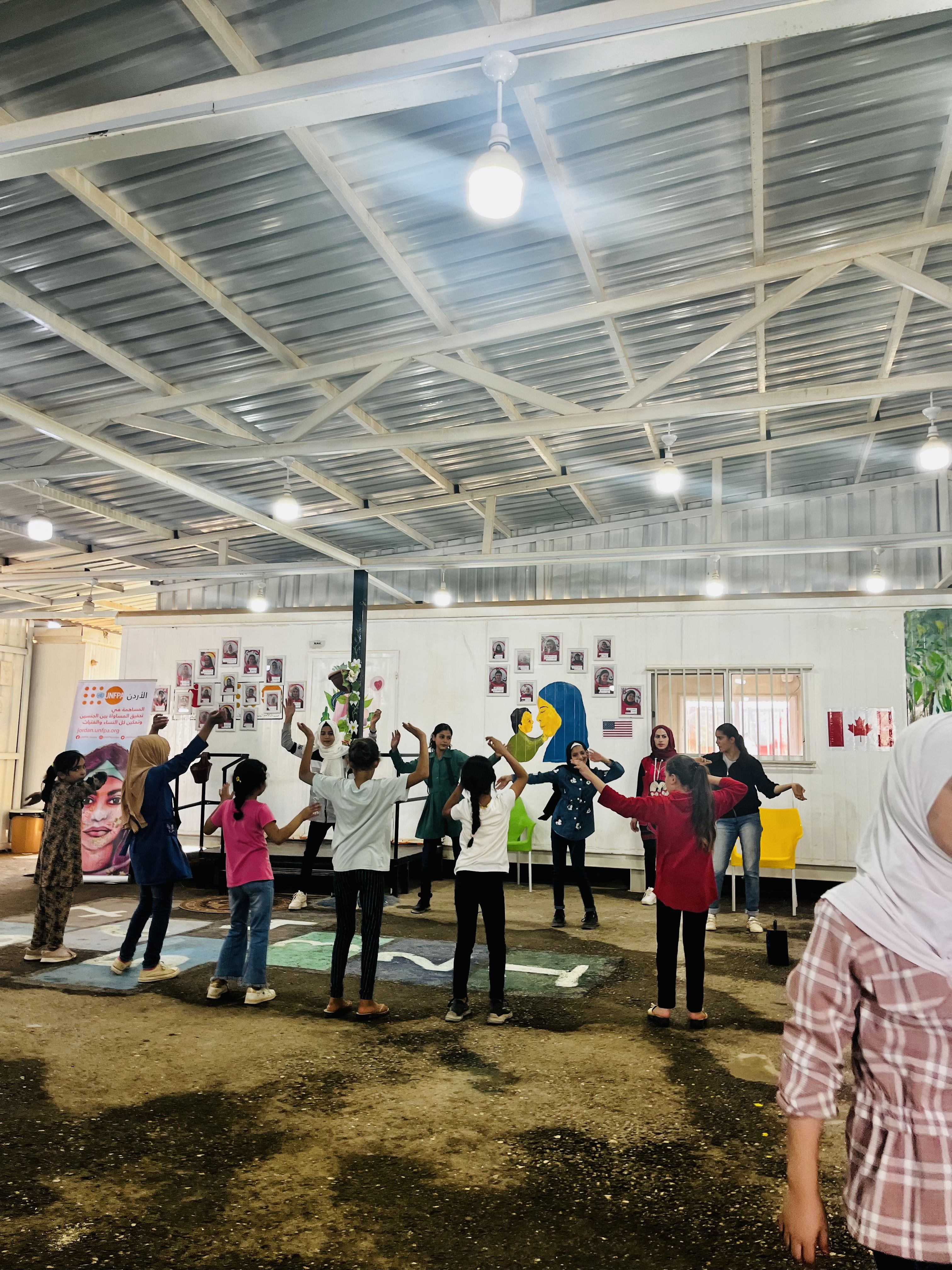Axios in Jordan: Growing up in the world's largest Syrian refugee camp

ZAATARI REFUGEE CAMP, JORDAN — A whole generation of Syrian refugees are living out their lives — working, getting married, having children — in a camp that was supposed to be a temporary refuge while they fled their country’s civil war.
Why it matters: This camp is not a sustainable long-term option. It was never designed to be one, and the makeshift facilities here are nearing the end of their lifespan — but there are still roughly 80,000 Syrians with nowhere else to call home.
The big picture: One UN refugee official likened the camp, which covers roughly 2 square miles, to a small city.
- Boys in backpacks flood the streets in the late afternoons after school is let out. Girls attend after-school programs offered by NGOs, some of which include Zumba or art or music lessons.
- Syrian men tend to their various shops along the main business street, referred to as "Champs Elysees,” offering fresh produce, coffee, scarves, bike repairs, washers and dryers, haircuts and other daily wares.
- Nearly 16,000 babies have been born there since the camp's opening in 2012, according to people working in the camp.

Zoom in: Axios met W.G. — who spoke on the condition that Axios would refer to her only by her initials — on a recent trip to the camp, sponsored by the United Nations Population Fund (UNFPA), which focuses on sexual and reproductive health care issues.
- W.G. was 11 when she and her family fled the violence in Syria. A decade later, she’s now 21, married to another refugee who also grew up in Zaatari, and raising a newborn.
- Growing up in Zaatari was difficult in the beginning, but life in a refugee camp has been her reality for so long, "we just got used to it," she said through an interpreter.
- When asked if she hopes to return to Syria to raise her now-growing family, W.G. said she would like to stay in Jordan and has no plans to return.
Scores of displaced Syrians are in the same position. Some refugees told Axios that family members who stayed in Syria have warned them against returning home, both to protect their physical safety and due to economic instability.
- Zaatari is now closed to new refugees, which has made some residents hesitant to leave — they likely wouldn’t be able to come back if they’re not able to settle elsewhere. Others have settled in Jordan, just outside the largest refugee camps.

Life has gone on, even as refugees continue to grapple with memories of the war and try to make something safe and permanent out of the temporary place they fled to as many as 10 years ago.
- Several teenage girls at a center run by Save the Children told Axios of the trauma they still harbor. One had physical burns on her skin from the war in Syria.
- "I do not want to remember the sounds," another said via an interpreter.
- Others described how scared they were when they first arrived in Zaatari and lived in traditional tents, which have now been replaced with more sturdy structures.
- Roughly 60% of marriages documented in Zaatari in 2020 involved girls younger than 18, according to the U.N. refugee agency estimates. Some families arrange for their girls to be married because of financial burdens.

What’s next: U.N. agency officials are worried about the impacts expected funding cuts could have on the now-established settlement for Syrian refugees, they told reporters during the media trip.
- The vast majority of the 25,000 prefabricated containers that serve as homes are nearing or past their intended 6-8 year lifespans. Currently, there are only funds to update roughly 1,000 shelters each year.
- Scholarships for Syrian refugees in Jordan to attend university also have declined due to funding shortages — from over 200 recipients two years ago, to just 15 for 2022.
- Some NGOs have also had to cut back their aid, or have shifted it to other parts of the world as new crises have arisen.
- The World Food Program, for example, has had to make cuts to its food assistance for Syrian refugees over the years.
"I think literally every single agency in this camp has had think of ways to cut back" while minimizing the potential harm caused by the cuts, said Mario Echeverria, who heads the U.N. refugee office in Mafraq, Jordan, which includes Zaatari camp.